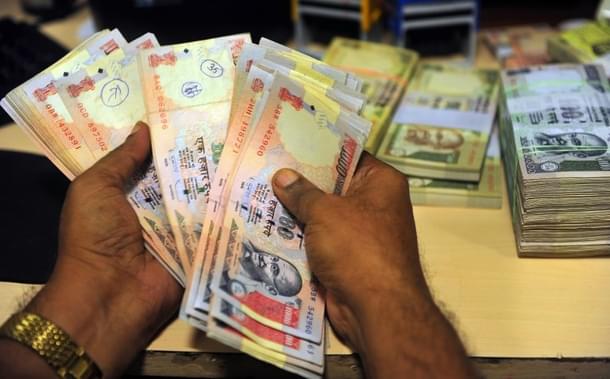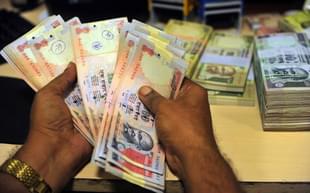Economy
Dissecting Bankruptcy Code: Creditors’ Definition Is Not Sound
Vaibhav Totla
May 26, 2016, 03:06 PM | Updated 03:01 PM IST
Save & read from anywhere!
Bookmark stories for easy access on any device or the Swarajya app.


- It is a sound and predictable framework to allow lenders and debt investors to restructure or liquidate failed companies in a time bound manner.
- The code fails to address the relationship among different classes of creditors in arriving at a resolution which is fair for all parties involved.
The long awaited Insolvency and Bankruptcy Code was recently passed by both houses of the parliament, to loud cheers from many commentators. It is, without a doubt, a step in the right direction to make India more investor-friendly, especially for credit investors.
There are around Rs 4,50,000 crore of reported Non Performing Assets (NPAs) and another Rs 3,50,000 crore of estimated stressed assets in the Indian banking system. The existing capital base of the 15 Asset Reconstruction Companies in India (which have the mandate to purchase and restructure/realise NPAs) is quite insufficient in comparison at an estimated Rs 4,000 crore. This, coupled with a growing economy which will continue to need additional investments, makes it imperative for the country to encourage alternate avenues of capital – especially foreign capital.
A bankruptcy law, which provides a sound and predictable framework to allow lenders and debt investors to restructure or liquidate failed companies in a time bound manner, is definitely the need of the hour.
Firstly, the code entails a single window forum in the form of the National Company Law Tribunal (NCLT) to hear bankruptcy cases. This is a welcome departure from the current position where multiple agencies can be approached by creditors to enforce their rights (BIFR – Board for Industrial and Financial Restructuring, DRTs – Debt Recovery Tribunals, High Courts etc), which has only added to the confusion and uncertainty for creditors.
It provides a time-bound framework for resolution or restructuring of debts (180 days, extendable by a maximum of another 90 days if approved by 75 percent of the creditors), failing which companies will go into liquidation. This sensitivity towards time value of money and aversion to delay tactics in negotiations, which the Bankruptcy Law Reforms Committee (BLRC) alludes to in many places in its report, sends a strong signal to both the debtor and creditor on the intent of the regime.
However, given that it’s a new and untested framework, the system could be putting too much pressure on itself by imposing a hard nine-month deadline. Even the US Chapter 11 process, which is a well-oiled machine through many years of experience, allows for an 18-month horizon at the wider end for parties to agree on a restructuring, before triggering a liquidation.
The BLRC has also been thoughtful in disallowing any voting rights to related party debts, with a fairly wide definition of “related parties”. This is a very important aspect of the code. In emerging jurisdictions like Indonesia and Thailand, there have been many instances where promoters have used related party debt claims (both genuine and bogus) in order to control voting rights in an insolvency process and thereby drive the restructuring in their favour.
The main shortcoming of the code, however, is the failure to address the relationship among different classes of creditors in arriving at a resolution which is fair for all parties involved. The code is simplistic in its approach of arriving at a consensus through a 75 percent threshold of all financial creditors for all key decisions.
As per the code, as long as 75 percent of the financial creditors (note that operational creditors will not have a say) consent to a particular restructuring plan, the Adjudicating Authority (i.e. the proposed NCLT) is authorised to approve the plan. The only specific condition proposed is for the Adjudicating Authority to be satisfied that the plan provides for a repayment of the operational creditors in a manner specified by the Insolvency and Bankruptcy Board of India (a regulatory body proposed to be created as per the code).
Most developed bankruptcy regimes, for instance the US Chapter 11 or the Canadian CCAA (Companies’ Creditors Arrangement Act), entail a concept of different “classes of creditors”, thereby acknowledging that interests of different types of creditors may differ.
The most common
classification is secured and unsecured creditors. The aim is to ensure that
the perspective of each class of creditors is heard and the final resolution
produces a just outcome for every class. This does not mean that individual
creditors are allowed to block and veto the entire plan. A majority in each
class (usually defined at 66.67 percent) can normally drag the dissenting minority in
that class, but junior classes are accorded some protection.
The manner in which interests of the junior classes of creditors are protected varies across jurisdictions. In Canada, for instance, each restructuring plan has to be approved by a majority in number representing at least two-thirds in value of the claims voting, separately for each class of creditors. In other words, the Canadian CCAA regime does not allow the secured class of creditors to “cram-down” on the unsecured class.
In the US chapter 11 on the other hand, the secured class can
“cram down” on the dissenting unsecured class – only if the Bankruptcy Court is
satisfied that a) the plan does not discriminate unfairly and b) is “fair and
equitable” with respect to the dissenting classes. In determining whether a
plan discriminates unfairly, Bankruptcy Courts normally consider whether the
grouping of creditors is reasonable and done in good faith.
For the “fair and
equitable” test, the Courts would consider aspects like whether the plan treats
creditors with similar claims (i.e. which are pari pasu) equally, whether any claims junior to the dissenting
class are getting any distributions, whether the value offered to the
dissenting class is supported by an independent valuation etc. The US Bankruptcy Code also provides examples
of “fair and equitable” treatment to guide the judges.
The Indian code as it
stands currently does not provide this protection to junior classes of creditors.
However, the Indian code
does permit an outcome whereby the secured lenders (i.e. the public sector
banks) together with unsecured domestic NCD holders can push through a plan
(given they together represent 83 percent of the financial creditors) which entails full
recovery for themselves and zero for the foreign banks/investors. Admittedly,
this is an extreme example and is highly unlikely to be the intention of the
drafting committee. But one can also conceive a less dramatic example which
could also result in an unfair outcome for certain creditors, in the absence of
a specific protection similar to the “fair and equitable” test.
This concern for mezzanine/unsecured debt investors is particularly accentuated in the Indian context
where corporate lending is dominated by public sector banks. According to RBI
data, public sector banks account for around 72 percent of the total banking sector assets.
Foreign banks/investors would understandably be concerned about public
sector banks and domestic institutions “ganging-up” against them.
Previously, holders of
unsecured and defaulted FCCBs have been able to file winding up petitions in
High Courts to independently enforce their rights and could not be dragged into
CDR (Corporate Debt Restructuring) schemes proposed by banks. With the new
bankruptcy code, in such a scenario, the winding up petition would result in an
initiation of an insolvency process under the new code, which in turn will lead
to a moratorium on all creditors including the FCCB holders from enforcing
their rights. In the ensuing insolvency process, it is possible that the FCCB
holders are “crammed-down” by the public sector banks. So, counter intuitively,
it should not be a surprise if foreign investors conclude that the passage of
the new bankruptcy law effectively worsens their position than before in such
an instance.
This is, again, unlikely to
be the intention of the drafting committee. Both the BLRC and RBI have noted specifically
that one of the aims of the new code is to revive the corporate bond market in
India. However, given that corporate
bonds are generally unsecured, without adequate protection for unsecured
creditors in the code, tough to see how this aim can be achieved.
Another issue which
warrants a brief mention is the treatment of operational creditors. The code does not provide any voting rights
to operational creditors with the rationale that these creditors may not have
the ability to assess restructuring plans. To protect their interests, the Adjudicating
Authority is required to ensure that the resolution plan is fair for such
creditors. The reasoning provided by the BLRC for this approach is sound – i.e.
to avoid the implementation issues in providing a vote to small individual
creditors.
However, if companies need
to be kept as going concerns while the insolvency process is in progress,
certain critical vendors need to be given additional comfort/protection in the
code to incentivise them to continue to supply goods/services to ensure smooth
operations – which will ultimately impact valuations and recovery for
creditors.
To be fair, the Indian bankruptcy
code has provided powers to the proposed Insolvency and Bankruptcy Board to
impose certain additional conditions which will need to be met before the
Adjudicating Authority can approve resolution plans. It is quite possible that
the BLRC intended the Board to consider and address issues like the ones
pointed out above. But with the BLRC report explaining the committee’s
rationale for the draft code being largely silent on these matters, it’s hard
to understand their thought process on these issues.
To conclude, the new code is certainly a solid step forward. It would be quite harsh to be overly critical as any new legal framework needs time and more importantly, test cases to evolve and perfect itself – it needs to discover its strengths and weaknesses, understand the practical implementation issues and continue improving. This piece is only an attempt to highlight a few such areas for improvement or questions to consider, which can help sharpen the code further.
Vaibhav Totla has been an investor focussed on credit and distressed debt investments for over a decade, through multiple roles across a leading commodity trading house and a large global investment bank. He is an IIM Ahmedabad alumnus and also a Chartered Accountant.





